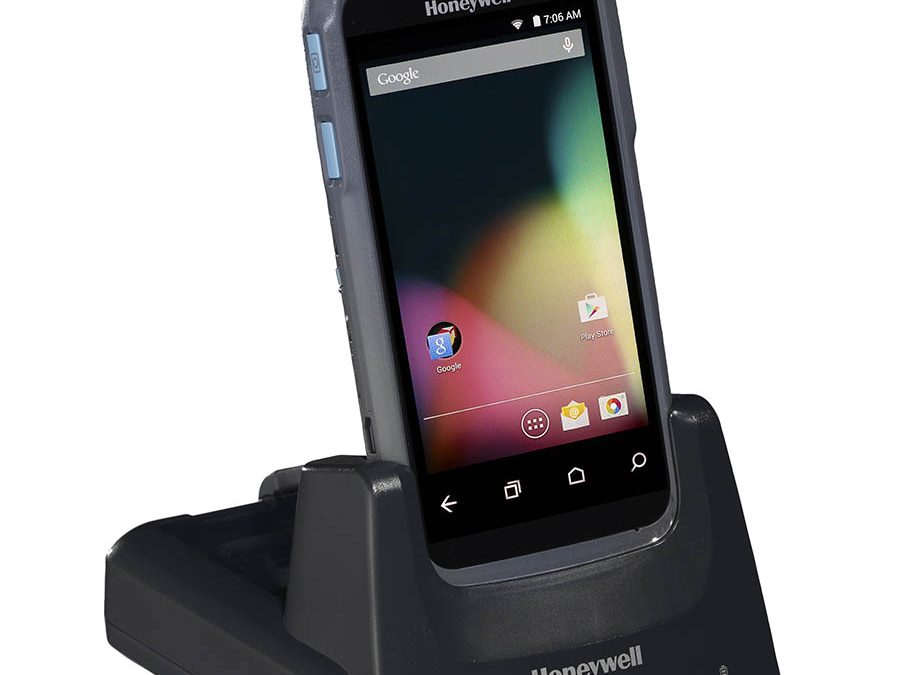
by Chelsea Williams | May 31, 2019 | Healthcare, Uncategorized
In busy hospital environments, patient care and safety are top priorities, but sometimes they can fall by the wayside when inefficient processes slow workflow rather than streamline it. Fortunately, with improvements in technology and healthcare, there are solutions available that effectively improve patient care while simultaneously saving time and increasing productivity.
Hospitals and other healthcare facilities can leverage automatic data collection technologies like mobile computers, barcode scanners, and more to keep patients safe and well cared for. Here are a few solutions that improve patient care:
Filled with cutting-edge solutions, download our complete product catalog here.
Barcoding
Patient misidentification can lead to disastrous consequences, and manual record-keeping inevitably leads to human error. Barcode wristbands are an easy, effective way to ensure that patients can always be identified accurately.
Patients aren’t the only ones being helped by barcoding technology. Hospitals and healthcare facilities can use barcode labels to identify and track specimens and supplies. This prevents against misidentification, reduces errors, and ensures that inventory is always accurate and up-to-date.
RFID
There are many advantages to real-time location data, and RFID technology is a great way to access these benefits. Real-time tracking can be used on campus for hospitals to track anything from surgical equipment to IT equipment.
Real-time tracking can improve patient safety by ensuring you are always aware of the supplies you have on-hand, and where they are located. When a patient needs a certain procedure, you want to make sure you have everything you need readily available. This also has a secondary cost benefit by helping you to avoid purchasing excess supplies.
Mobility
You can simultaneously improve patient care while you increase the efficiency of doctors and nurses by providing them with mobile devices. These work wonders at keeping workers connected both to each other, and to their patients. Connectivity provides instantaneous access to critical data, which frees up time for healthcare workers to focus more on providing quality care to patients. It also allows them to remotely monitor patients and be alerted in real-time when alarms are triggered, so they can respond promptly.
With the healthcare industry being as widespread and valued as it is, there is a major opportunity to increase efficiency and reduce errors using Honeywell connected technology. These solutions make it easier for healthcare providers to effectively track patients, medications, assets, and inventory, while also providing an auditable record of their activities to help ensure compliance with best practices.
One of the most recommended devices for healthcare professionals looking to improve patient care is the Honeywell Dolphin CT50h clinical smartphone. Specifically designed to help clinicians better focus on their patients, the CT50h provides mobile access to clinical systems, vital patient data, and other hospital staff. The rugged design makes it perfectly suited for busy environments, while the long battery lifespan ensures no downtime for a full 12-hour shift.
The CT50h also boasts unparalleled scanning performance for both 1D and 2D barcodes, which helps with correct patient identification as well as data entry, making it a great tool to help improve patient care.
Improving Care with Technology
As a member of the healthcare industry, your primary focus will always be on ensuring you provide your patients with the best care possible. To achieve that, you need to have the right tools and technology at your disposal. Manufacturers like Honeywell have gone to great lengths to help healthcare providers improve patient care and safety. If you are interested in learning what Honeywell devices can do for your operation, contact the team at Informs today.
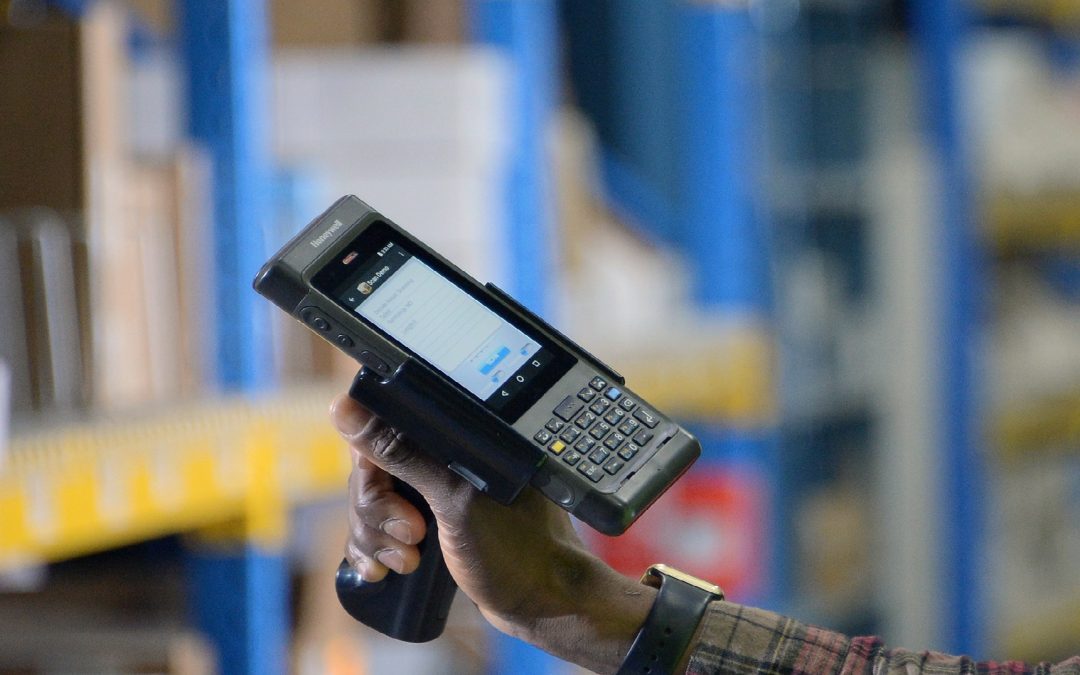
by Chelsea Williams | May 14, 2019 | Mobile Computing
Enterprises everywhere are thinking about how they will navigate the upcoming OS migration. Support is coming to an end Jan 13th 2020 on Windows embedded devices, so it’s time to start planning how you will migrate to other operating systems and which mobile computers to choose.
Are you ready? End of life for Windows Embedded OS.
Dates to be aware of:
- June 10, 2018 – Windows Embedded CE 6.0 will be End of Life
- June 9th, 2019 – Windows Embedded 8.1 Handheld will be End of Life
- January 14th, 2020 – Windows Embedded Handheld 6.5 will be End of Life
Here is how to get started:
Choose a Provider
A service provider is an incredibly important piece of the Enterprise technology puzzle. The right service provider will be instrumental in helping you achieve easier, faster deployments and get the most out of your investment.
Look for someone that can do more than provide you with just the hardware you need. Your provider should be an industry expert that understands both the technology and your industry, so they can guide you on what solutions will best address your needs.
Your provider should recommend a long-term, future-proof solution—otherwise you will have wasted time and resources investing in a solution that will soon be obsolete.
Hardware and advice aren’t the only things that providers offer, however. A good provider will have a range of valuable services that make for smart business investments, like mobile device management, and onsite repair. These added services are great for helping to protect your investment.
Choose an Operating System
Once you are confident that you have the right provider, have them or your IT department assess the state of your operation’s readiness for migration. Are your devices working and capable of migrating to the new OS, or do you need to purchase devices? How many devices will you need to upgrade? And what OS will offer the highest performance?
Hardware manufacturers are beginning to point to Android OS as the dominant OS for enterprises using mobile computers. Rugged device manufacturers like Honeywell have begun tailoring their devices to Android, and three of Honeywell’s rugged devices, which run on the Mobility Edge platform, have been validated as Android Enterprise Recommended. This program makes it easier for organizations to select, deploy, and manage enterprise devices and services.
Choose a Device
Rely on your provider to help you with selecting the devices that are best suited for your application and your needs. They will likely point you towards a rugged device manufacturer like Honeywell, who is forward-thinking in their product design. Some of the devices Honeywell offers are:
Dolphin CT60 mobile computer—a rugged touchscreen device with an extended battery life. This device offers high-performance scanning and protection against dust and moisture.
Dolphin CN80 mobile computer—an ultra-rugged device built to withstand the rigors of harsh environments. The CN80 features both a traditional keypad and a large touchscreen interface for quick, efficient data entry options.
What’s Your Plan?
Have you struggled to nail down a solid OS migration plan? Even though this transition can be complicated and intimidating, you need not worry. Our team at Informs, Inc. can help you find the right strategy and device for the transition from Windows to Android.
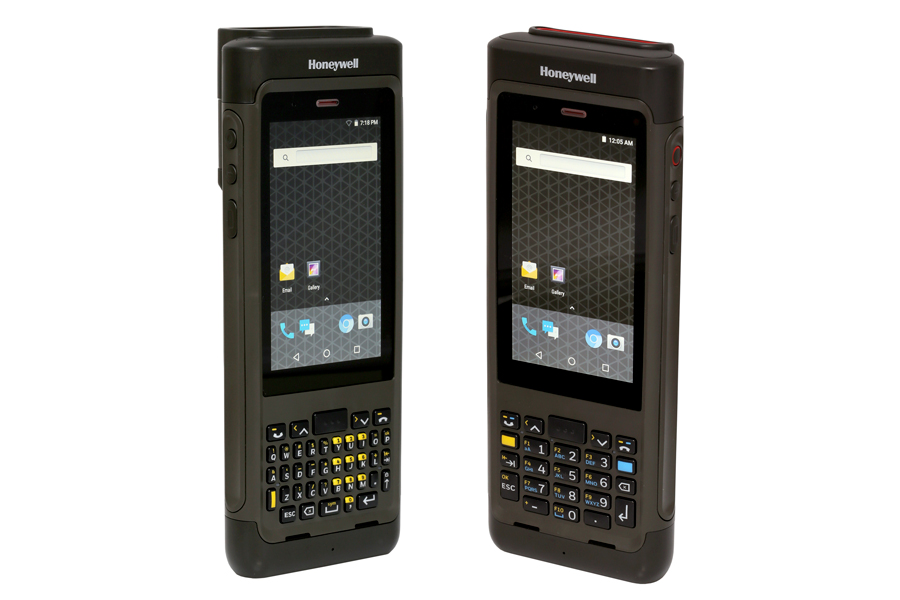
by Chelsea Williams | Apr 10, 2019 | Mobile Computing
Enterprise IT security is becoming increasingly difficult to manage. New threats are emerging daily (malware, phishing attacks, ransomware), and the cost of the attacks is rising accordingly. The average cost of a corporate data breach is nearly $4 million. In addition, there can be incalculable damage to a company’s reputation among its customers if sensitive data is compromised.
Mobile technology has become a critical vulnerability. More employees can access corporate data on a mix of company and personal devices, sometimes on remote networks that may not be secure. If you don’t have full control over your mobile device security, you are putting your corporate data risk. You must secure your mobile enterprise with the correct level of security – below, we’ve outlined a few tips to keep those mobile connections safe.
Leverage Device Management Tools
Mobile device management solutions such as SOTI MobiControl allow companies to quickly configure, deploy and manage mobile computers. The solution can help restrict mobile devices to using single applications in order to protect data, as well as establish secure mobile connections and protect important data using a secure mobile devices and configurable settings.
The Honeywell Mobility Edge platform allows companies to track your devices anywhere and anytime, while also extending security enhancements and support for the Android operating system through multiple OS updates. This consistent secure platform also streamlines large device deployments and protects sensitive company information.
These solutions also make it easier for IT to centrally manage and enforce corporate mobile device security policies.
Secure Mobile Connections
Mobile employees work everywhere – from remote job sites to urban coffee shops. That means they are accessing your corporate files and applications through a mix of wireless broadband and WiFi connections.
Experts recommend using a strong VPN solution to ensure that these communications remain encrypted, particularly when a mobile device is access the company network or a cloud-based system.
In addition, mobile device security should block enterprise devices from using public WiFi networks. Fake WiFi systems that are used to breach mobile devices account for 28% of malware attacks, according to a 2018 Enterprise Mobility Exchange poll. A VPN provides encryption, access management, and user authentication.
Control Third-Party Software and Mobile Apps
Enterprise mobile devices have come a long way since the days of green screen systems. These devices use consumer operating systems (Android), and leverage web-based applications and other solutions.
As a result, these new rugged devise operate much like a personal smartphone. Companies should tightly control or block access to third-party software solutions and mobile apps that users may be tempted to download on their devices.
Malicious apps account for a 24% threat of malware infections, according to the Enterprise Mobility Exchange poll. To better control app installation, companies can establish their own secure “app stores” with vetted and approved applications that end users can access. Mobile device management software can also be used to monitor and block the use of third-party apps.
For employees that use personal mobile devices in the field, the use of a remote virtual work environment and a VPN connection can keep corporate data secure.
Educate Employees
Most importantly, it is critical you increase protection for the weakest link in your mobile device security infrastructure – your employees. The vast majority of malware and ransomware attacks are the result of employees falling for email phishing scams. Make sure employees are aware of mobile security policies, have been trained to recognize phishing emails, and are given ongoing education to keep them updated about the latest threats. Conduct regular mobile security audits, and do penetration testing by simulating phishing attacks.
With the proper technology and policies in place, you can prevent the majority of common cyber attacks that target mobile devices and applications. This will not only keep your mobile infrastructure up and running, but also protect corporate data and help avoid costly data breaches.
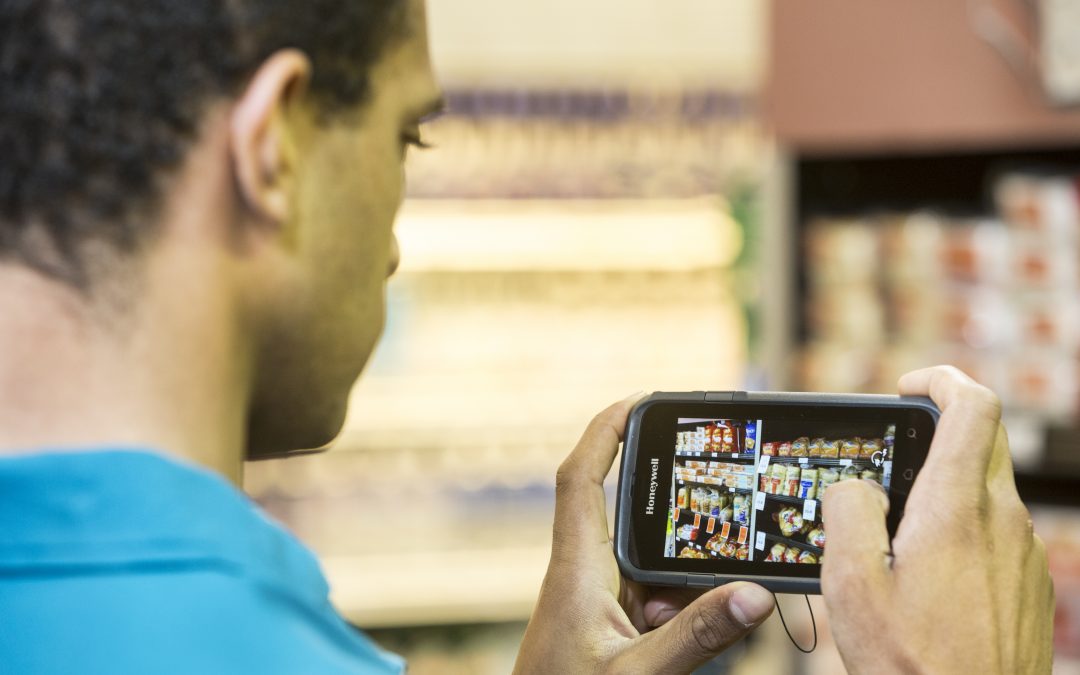
by Chelsea Williams | Apr 5, 2019 | Mobile Computing
By now, you have probably heard that Microsoft is phasing out support on Windows-embedded devices. The first stages of the process are well underway, and come January 14th, 2020, all devices will be End of Life (EoL).
These are the dates to be aware of:
- June 10th, 2018 – Windows Embedded CE 6.0 will be EoL
- June 9th, 2019 – Windows Embedded 8.1 Handheld will be EoL
- January 14th, 2020 – Windows Embedded Handheld 6.5 will be EoL
It’s time to start planning to migrate over to another operating system (OS). You will need to have an OS migration strategy in place for your mobile computers, as Windows-embedded devices will no longer receive updates or security patches, leaving devices vulnerable to attack from viruses and malware. You’ll also be unable to add any new applications to mobile computers, meaning your operation’s growth could be stifled.
Here’s how you can get started:
Choose a Provider
Choosing a mobile computer means investing into your operation, and that shouldn’t be taken lightly. If you’re in the process of OS migration, the right provider will be instrumental in successfully navigating the switch.
Your provider should:
Provide more than hardware
When you choose a provider, you aren’t just selecting which source you want to use for your devices, you are selecting valuable resource you can use for advice, maintenance, and support.
Understand the technology and industry
To really know which solutions would provide the most benefit to you, your provider must understand your industry, your operation, and your needs. A good provider will know how to best apply each solution, and which solutions would be optimal in addressing the challenges you face.
Recommend a long-term solution
You can tell if a provider is invested in your business by whether or not they recommend solutions that will provide you with the biggest return. Technology can become obsolete quickly as innovation moves forward, so any mobile computer should be future-proof.
Choose an Operating System
Your provider should assess the state of your operation and how ready it is for OS migration. They can help you decide on a high-performance operating system that will provide you with the most longevity for your mobile computers.
With Windows support ending, other operating systems have risen up to become the top choice for industrial applications. Android, in particular, has been popular. As an open-source platform, it empowers developers to respond quickly as new needs arise, and because it’s already so widely used on personal and commercial devices, your workforce is likely already familiar with it, which cuts down on training time.
Choose a Device
You will also want to assess your devices to determine your readiness for OS migration. Your provider can let you know whether you will need to purchase new devices, and if so, how many need to be upgraded. They can also recommend the best devices, like the ones built on Honeywell’s Mobility Edge platform. Mobility Edge is a unified hardware and software platform that extends device lifecycles and helps make OS migration easier.
Rugged devices manufacturers like Honeywell offer:
CT60 Mobile Computer
This is a rugged touchscreen device for transportation, logistics, and delivery workers that offers a long-lasting battery, high-performance scanning, and protection against dust and moisture.
Dolphin CN80 Mobile Computer
The CN80 is an ultra-rugged device for distribution centers and logistics providers that features both a traditional keypad and a large touchscreen interface to offer quick, efficient data entry options.
Successful OS Migration
The transition from the familiar operating systems of Windows to a new OS like Android can be intimidating, but it doesn’t have to be. The right provider can help you determine which OS and mobile computer devices are best suited for your operation.
Informs, Inc. is one of the largest Honeywell resellers in the US, and can provide support, advice, service, and assistance when it comes to your OS migration strategy. If you are looking to transition to a new OS, contact Informs today.
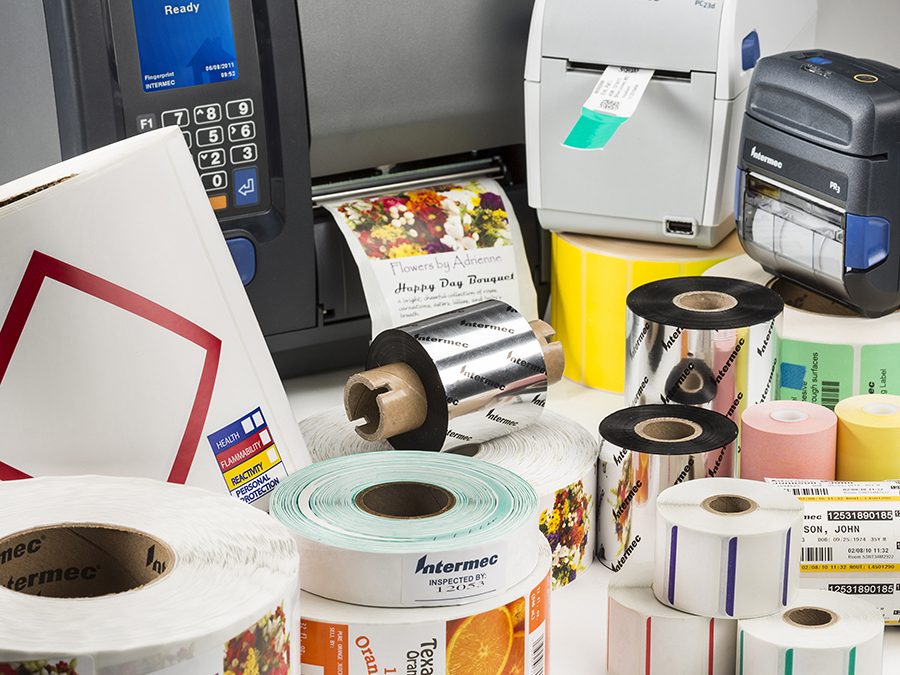
by Chelsea Williams | Mar 20, 2019 | Printing
As companies look for ways to create more customized and branded packaging, color label printing has grown in importance. Use of color has also extended to barcode printing – designers want their packaging to make a visual impact, without having to accommodate a strictly black and white barcode on the box.
However, color barcodes come with caveats – if you use the wrong color combination, the code will be difficult (or impossible) to scan. When choosing colors for your barcode labels, you have to take the barcode scanner into consideration, along with barcode spacing and contrast. Some scanners, like Honeywell’s Xenon 1900 Color area-imaging scanner, utilize ColorFusion Technology which allows color images to be captured, even at high contrast, without sacrificing performance. However, many general purpose scanners lack the technology required to get a good read, so you’ll need to ensure that you are designing color barcode labels to overcome the challenges of contrast and color combination.
Contrast is critical. If there isn’t enough contrast between the bar code and background, most scanners will have a difficult time reading the barcode. Those failed scans can cause costly problems down the road.
Laser barcode scanners use a light source that operates in the red portion of the color spectrum. Because of this, these scanners have difficulty with the colors red and yellow (red essentially shows as “white” to these scanners). Laser scanners will have an easier time reading barcodes that are printed in dark colors with a high contrast compared to the background color. The lower the contrast, the harder it is to scan the code.
This is why most barcodes are printed in black and white; that combination provides the highest level of contrast. For companies that want to add more color to their packaging, there are a few simple rules to follow when selecting a color combination for barcode labeling.
Selecting a Readable Color Barcode Combination
Make sure you select colors that are compatible with the barcode scanners you are using, and always keep contrast in mind.
Examples of Good Color Combinations: The best combinations for barcodes include bars that are dark blue, dark green, dark brown, or black, and backgrounds that are white, or in the yellow or red spectrum. Remember, laser scanners identify red as white, providing a colorful background option that won’t affect contrast.
Examples of Bad Color Combinations: Poorly designed color barcodes include bars that are white or in the red or yellow spectrum, or backgrounds that are too dark, or in the blue or black part of the spectrum.
There are other factors to consider as well. When designing your barcode, do so with CMYK and reference a color management system (CMS) to assure a quality reproduction of the desired color for the labels. In addition, avoid labeling materials that are reflective. Even a slight reflection on the label can affect contrast, so make sure you select labels and overlays that won’t cause scanning issues.
And make sure there are a few millimeters of space around the entire code (sometimes referred to as a light zone or quiet zone) to help ensure reliable scanning. This area should be free of text, marks, or other printed items. The quite zone should be a minimum of 10 times the width of the narrowest bar of a linear barcode, or one cell width on each of the symbols for 2D barcodes. The quite zone allows the scanner to see the entire code.
Make sure you test the barcode label with different scanners to make sure it will be readable both in your own facility and for downstream supply chain partners. As long as you follow the basic contrast rules (dark colors for the bars, light colors or red for the background) you should be able to produce an attractive and readable color barcode.






Recent Comments